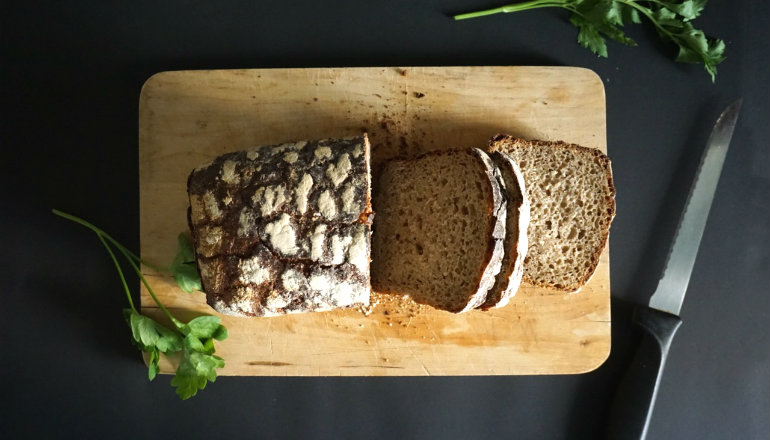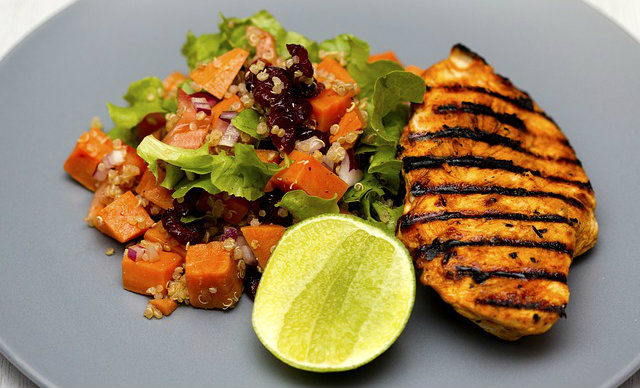
It seems so normal to eat eggs on toast for breakfast or a sandwich for lunch. A muffin or some pretzels dipped in salsa for a snack and pasta for dinner to refuel after a heavy workout. Of course, the muffin is low fat and the toast is whole grain. It only makes sense to eat healthy when you are working out and trying to maintain a good lifestyle, right?
What most people don’t realize is that this diet, which is typical for most Westerners, is slowly killing them, and that is no exaggeration. These foods I mentioned all have one thing in common — they are derived from wheat.
The Problem With Wheat and Inflammation
What is wrong with wheat? What if you stick to the whole-grain products? It doesn’t matter. The wheat grain itself, whether organic, whole grain, whole meal, or white, pretty much all has the same effect on the body. The bottom line: wheat is highly inflammatory. And since the average person is also consuming dairy and sugar on top of wheat, our diets on the whole are highly inflammatory, which is why so many people suffer unnecessarily from disorders such as irritable bowel syndrome, eczema, asthma, arthritis, and allergies to name a few.
I have learned a great deal from my own journey from being a sick asthmatic child to a world-class athlete, as well as by working with clients with autoimmune disorders. Food has the power to kill you or to make you thrive. With diet alone I cured myself and became a gymnast, a world champion in Brazilian jiu jitsu, and an Overall Unlimited Champion in Ms. Figure.

Curing my asthma helped me become a world-class athlete.
How I Cured My Asthma
It all started when I noticed a direct correlation between the onset of my childhood asthma attacks and eating certain foods. One of my “triggers” seemed to be eating bread, cakes, muffins, or pastries. Even as a little kid, I was already sick and tired of being told by my pediatrician that I needed to take more of this drug or that drug. I took matters into my own hands and with the help of a revolutionary naturopath I changed my diet — which changed my life.
Within three weeks of eliminating my trigger foods — one of which was wheat — I cured my asthma once and for all. Since then, with the exception of times of extreme stress, I have never needed to take any asthma medication again.

Why Wheat Is So Bad for Us
The modern wheat grain we consume today is the product of thousands of years of breeding and modification to create a grain more resistant to disease, heat, and drought. In fact, the difference between the ancient wheat grain and the modern grain can be clearly seen – the original wheat plant is much shorter and the kernels are much harder to pick off. These changes came about because the longer grain with kernels that were able to be separated through threshing was much easier to harvest.
Breeding wheat so it became easier to harvest, more resistant, and lasted longer in storage was great for our survival, especially when resources were scarce, but these “improvements” were not necessarily better for our health. In fact, modern wheat actually contains more gluten than its older form, and research in the Scandinavian Journal of Gastroenterology demonstrated that the ancient grain einkorn, known as the oldest variety of wheat, does not have the same negative effects on intestinal cells that modern wheat does.

Einkorn is an ancient grain that is healthier, but harder to harvest.
In addition to all this, the modern milling methods used to commercially produce white flour eliminate the portions of the wheat kernel (bran, germ, and shorts) that are richest in proteins, vitamins, fats, and minerals. This results in the grain itself being nutritionally deficient and so far removed from its original form that our bodies basically view it as a foreign substance. It is seen by our bodies as an irritant with little nutritional value.
Wheat and Our Immune System
Our immune system protects our bodies from potentially harmful substances by recognizing and responding to foreign bodies such as viruses, fungi, or bacteria. Our immune system is also ready to invade or kill non-living substances such as toxins, chemicals, drugs, and foreign particles. It does this by moving into an area and flooding it with little immune system soldiers ready to do battle — to us on the outside this shows up as inflammation.
Unfortunately, the modern wheat grain triggers the same inflammatory response in our bodies. What most people experience, without necessarily realizing it, is a mild chronic form of inflammation that typically manifests as gluten intolerance, leaky gut, bloating, gas, lethargy, chronic infection, and allergies. This state of chronic low inflammation is often compounded if the wheat product we have ingested is packed with other inflammation-provoking nasties such as preservatives, partially hydrogenated vegetable oils, and artificial colors. So think again when you go to eat that piece of rainbow birthday cake your friend bought at the supermarket.

Do you know what’s in that grocery store birthday cake?
People with a more sensitive immune system that tends to attack everything, and who are already hyper-charged from the effect of wheat, can experience much more than just allergies and bloating. Here is a list of some of the potential disorders brought on by wheat consumption, as well as autoimmune disorders caused by excessive inflammation in the body according to health expert Paul Chek, who wrote the book How to Eat, Move and Be Healthy!:
- Heart attack
- Cancer
- Obesity
- Insulin Resistance
- Asthma
- Gout
- Arthritis
- Celiac Disease
- Lupus
- Depression
- ADHD
- Alzheimer’s Disease
- Depression and Postpartum Depression
- Eczema
- Inflammatory Bowel Syndrome
- Diabetes
If you suffer from any of these illnesses, try eliminating wheat from your diet and see how you feel. At the very least you should have more energy and feel less bloated. At best, you may be able to manage or eliminate some symptoms without the use of drugs.

What Do You Eat If You Can’t Eat Wheat?
There are so many alternatives to eating wheat. If you really like bread, then try bread made from the ancient grains such as amaranth, spelt, buckwheat, barley, or millet. These grains still contain vitamins, minerals, amino acids, fats, and fiber and have not been so drastically genetically altered. Other grain-based carbohydrates you can eat that don’t have the same negative effect are rice, oats, and quinoa.
Quinoa in particular is a much better alternative since it is higher in protein and contains all the essential amino acids. Quinoa contains phytonutrients and the omega 3 fatty acid alpha-linolenic acid (ALA) so it also has anti-inflammatory properties. So by eating quinoa instead of wheat, you will be reducing your inflammation rather than exacerbating it.
Personally, the majority of carbohydrates I eat come from fruit and vegetable sources like sweet potato, butternut squash, pumpkin, legumes, and bananas. The antioxidants and additional phytonutrients found in these sources are more nutritious and better for our health overall.

A quinoa-sweet potato salad goes great with grilled chicken.
You Have the Power to Transform Your Health
The next time you’re at the supermarket, try filling up your cart only with produce from the outskirts of the store. Fill your bags with all the fruits and vegetables you can get your hands on. Ancient grains such as quinoa along with fruit and vegetables are much more beneficial for your body than wheat. These better alternatives can provide you with all your carbohydrate needs and also come packed full vitamins and antioxidants necessary for optimum health.
Now that you know how damaging wheat is for your health, skip the bread, cracker, and pastry aisles altogether and take control of your health – just like I did – and feel healthy, vibrant, and energetic each and every day.



































